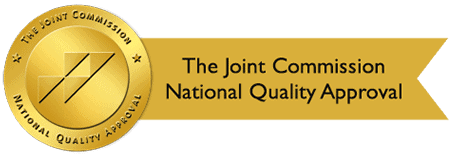By: Design for Change Recovery
Categories:
Is Stigma a Barrier to People Seeking Treatment for Heroin Addiction?
You are here:While it is a complex dilemma, the following are some of the most important details that you should know about heroin stigma. This information may help lessen the stigma of heroin addiction so people are less likely to resist seeking treatment.
The stigma associated with heroin use contributes to high death rates and increased incarceration rates. Stigma also keeps many heroin users from seeking treatment. Why is heroin stigma so powerful that it can affect so many people in such negative and dangerous ways?
What Is Heroin Stigma?
What images come to mind when you think about people who use heroin? Are the images negative and degrading? If so, societal stigma toward heroin might have affected your perceptions.
What is heroin stigma? The definition of stigma according to the World Health Organization:
“Stigma is the negative association between a person or group of people who share certain characteristics and a specific disease.”
The Merriam-Webster Dictionary defines stigma as:
“A mark of shame or discredit.”
Stigma is often the result of fear, gossip, and a lack of knowledge about a particular subject. Those who are stigmatized are discriminated against, stereotyped, and rejected due to their perceived inadequacies.
Stigma Drives People to Keep Using Heroin

What is it that keeps these individuals from getting treatment? Part of their reluctance to enter treatment is due to stigma. They’ve heard the terms junkie, addict, and crackhead all too often. Those terms cause a sense of guilt and shame that leads to further depression. When this occurs, the person often self-medicates with their drug of choice, which is heroin in many cases.
Those who are stigmatized for their drug use experience humiliation, and this is a powerful social punishment that drives them to continue and perhaps even intensify their drug use.
Heroin Stigma Among Healthcare Workers
Someone who is struggling with heroin addiction will avoid seeking healthcare services due to stigma in hospitals and doctor’s offices. Studies show that some healthcare providers are uncomfortable about working with people who have active substance use problems. This type of situation can have a negative influence on a person’s willingness to seek help.
Is there any scientific evidence to support health professionals’ attitudes toward those with substance use disorders? No, but researchers suggest that more direct experience with individuals with SUDs and the belief that treatment works will help healthcare workers develop more positive attitudes. Depending on how their attitudes are expressed, professionals can worsen or lessen the stigma associated with substance use disorders.
How Can We Reduce Heroin Stigma?
Changing the stigma associated with heroin or other drugs won’t be easy. Far too many people still view drug use as a character weakness or lack of willpower. Educational programs are the first step in changing those perceptions.
Other ways individuals can do their part in reducing stigma include:
- See the person for who they are, not what drug they are using.
- Be kind to someone who is in a vulnerable situation.
- Show compassion, give support and show respect.
- Learn more about drug addiction.
- Avoid using labels such as addict or junkie.
- Find evidence-based facts to replace the negative attitudes.
- Speak up if you see a person being mistreated because of their drug use.
The many people who struggle with heroin addiction deserve a chance to turn their lives around. Society can help by letting go of the stigma and learning the facts about addiction. Providing access to affordable, effective treatment is the next step.
Points to remember about heroin:
- Heroin is a potent opioid made from morphine
- It comes in powder form or a black tar-like substance
- It can be snorted, injected, or smoked
- Heroin is often laced with deadly fentanyl
- It enters the brain rapidly
- It can cause infection of the heart lining and valves
- Heroin is highly addictive
- Comprehensive treatment is needed to overcome heroin addiction
In the event of a heroin overdose, naloxone can be effective if given right away. However, more than one dose may be necessary, especially if fentanyl is present.
Treatment for Heroin Addiction at Design for Change Recovery
Heroin is one of the most addictive and deadliest drugs in America today. The addiction specialists at Design for Change Recovery provide a variety of proven therapies and treatments that facilitate recovery from this dangerous substance.
We use a combination of behavioral therapies, skills training, counseling, and holistic therapies to address the mental, emotional, and physical aspects of addiction. As a result of this approach, our clients gain improved health, more self-confidence, and higher self-esteem, which are essential for long-term abstinence.
Don’t let the stigma surrounding heroin addiction keep you from getting treatment. At Design for Change, you will not be judged and our compassionate staff is always available to offer support and encouragement.
Learn more about our treatment programs by contacting our Lancaster, CA facility today.
Sources:
- who.int – A Guide to Preventing and Addressing Social Stigma
- nida.nih.gov – Drug Facts and Treatment Stats


